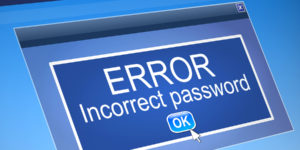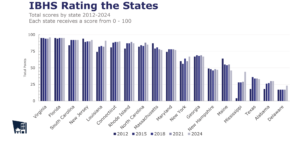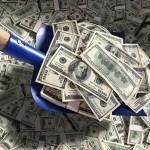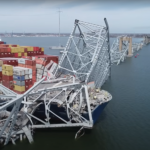Prime Minister Theresa May filed formal Brexit divorce papers on Wednesday, pitching the United Kingdom into the unknown and triggering years of uncertain negotiations that will test the cohesion of the European Union.
Nine months after Britons voted to leave, May notified EU Council President Donald Tusk in a letter that the UK is quitting the bloc it joined in 1973.
The prime minister, an initial opponent of Brexit who won the top job in the political turmoil that followed the referendum vote, now has two years to settle the terms of the divorce before it comes into effect in late March 2019.
“The United Kingdom is leaving the European Union,” May told lawmakers in the British parliament “This is an historic moment from which there can be no turning back.”
On the eve of Brexit, May, 60, has one of the toughest jobs of any recent British prime minister: holding Britain together in the face of renewed Scottish independence demands, while conducting arduous talks with 27 other EU states on finance, trade, security and other complex issues.
The outcome of the negotiations will shape the future of Britain’s $2.6 trillion economy, the world’s fifth biggest, and determine whether London can keep its place as one of the top two global financial centers.
For the EU, already reeling from successive crises over debt and refugees, the loss of Britain is the biggest blow yet to 60 years of efforts to forge European unity in the wake of two devastating world wars.
Its leaders say they do not want to punish Britain. But with nationalist, anti-EU parties on the rise across Europe, they cannot afford to give London generous terms that might encourage other member states to break away.
May’s notice of the UK’s intention to leave the bloc under Article 50 of the EU’s Lisbon Treaty was hand-delivered to Tusk in Brussels by Tim Barrow, Britain’s permanent representative to the EU.
Barrow handed the letter to Tusk, the EU summit chair and former Polish prime minister, in the Council President’s offices on the top 11th floor of the new Europa Building, according to a Reuters photographer in the room.
That moment formally set the clock ticking on Britain’s two-year exit process. Sterling, which has lost 25 cents against the dollar since the June referendum, rose almost half a cent on the news of the Brexit trigger reaching highs of $1.2478.
May signed the Brexit letter on Tuesday, pictured alone at the cabinet table beneath a clock, a British flag and an oil-painting of Britain’s first prime minister, Robert Walpole.
Brexit Deal?
May’s 6-page Brexit letter set a positive tone for the talks though it admitted that the task of extracting the UK from the EU was momentous and that reaching a comprehensive agreement within two years would be a challenge.
Within 48 hours, Tusk will send the 27 other states draft negotiating guidelines. He will outline his views in Malta, where from Wednesday he will be attending a congress of center-right leaders. Ambassadors of the 27 will then meet in Brussels to discuss Tusk’s draft.
Tusk said the EU would seek to minimize the cost to EU citizens and businesses and that Brussels wanted an orderly withdrawal for Britain.
“We already miss you,” Tusk said. “Thank you and goodbye.”
The course of the Brexit talks is uncertain.
May has promised to seek the greatest possible access to European markets but said Britain will aim to establish its own free trade deals with countries beyond Europe, and impose limits on immigration from the continent.
She has acknowledged that those measures would require withdrawing from the EU ‘single market’ of 500 million people, founded on the principles of free movement of goods, services, capital and people.
“We should work together to minimize disruption and give as much certainty as possible,” May said in the letter, adding that she wanted to strike an ambitious Free Trade Agreement with the EU.
“If, however, we leave the European Union without an agreement the default position is that we would have to trade on World Trade Organisation terms,” she said.
Her priorities also include leaving the jurisdiction of the European Court of Justice and securing “frictionless” trade with the bloc while ending full membership of the customs union that sets external tariffs for goods imported into the bloc.
She wants to negotiate Britain’s divorce and the future trading relationship with the EU within the two-year period, though EU officials say that will be hard.
“The time-frame is damn narrow,” said Martin Schaefer, a spokesman for the German Foreign Ministry.
A huge number of questions remain, including whether exporters will keep tariff-free access to the single market and whether British-based banks will still be able to serve continental clients, not to mention immigration and the future rights of EU citizens in the UK and Britons living in Europe.
One major uncertainty for May is who will be leading France and Germany, which both face elections this year.
“It’s bad news for everybody. It’s a wedge pushed into the European project,” French centrist presidential candidate Emmanuel Macron told Europe 1 radio.
The pro-EU Macron has struck a firm line on Brexit, saying he would ensure Britain gains no undue advantages outside the Union.
The Sun, Britain’s most popular newspaper, projected giant messages to Europe including “Dover and Out,” “Goodbye” and “See EU Later” onto the white cliffs of Dover facing the continent.
In the French media, the response was less celebratory. The Libération newspaper led with the headline: “We miss you already! Or do we…” over a picture of a guardsman wearing a bearskin hat, a traditional symbol of Britain.
United Kingdom?
Britain’s finance minister, Philip Hammond, said he was confident the country would negotiate a customs arrangement with the EU that would allow for borders to be as frictionless as possible after Brexit.
At home, May’s United Kingdom is divided and faces strains that could lead to its break-up. In the Brexit referendum, England and Wales voted to leave the EU but Scotland and Northern Ireland voted to stay.
Scottish nationalists have demanded an independence referendum that May has refused. In Northern Ireland, rival parties are embroiled in a major political crisis and Sinn Fein nationalists are demanding a vote on leaving the UK and uniting with the Republic of Ireland.
May said she knew that triggering Brexit would be a day of celebration for some and disappointment for others. “Now that the decision to leave has been made and the process is under way, it is time to come together,” May said.
(Additional reporting by Alastair Macdonald, Jan Strupczewski and Yves Herman in Brussels, Michael Rose in Paris and Kylie MacLellan, William James, Estelle Shirbon, Kate Holton, Paul Sandle and Anjuli Davies in London; Writing by Guy Faulconbridge.)





















 What Industry Executives Are Saying About Loss Reserves, Social Inflation
What Industry Executives Are Saying About Loss Reserves, Social Inflation  Maritime Law Invoked By Ship Owner in Baltimore Bridge Collapse to Cover Salvage Costs
Maritime Law Invoked By Ship Owner in Baltimore Bridge Collapse to Cover Salvage Costs  Study: Average Cyber Breach Insurance Coverage Gap is 350%
Study: Average Cyber Breach Insurance Coverage Gap is 350%  Progressive Gains as Drivers Shop Around for Auto Insurance—Again
Progressive Gains as Drivers Shop Around for Auto Insurance—Again 








